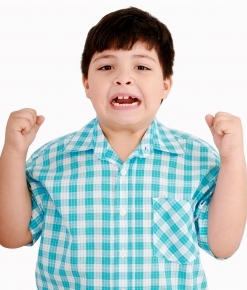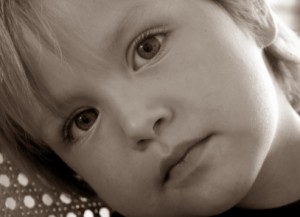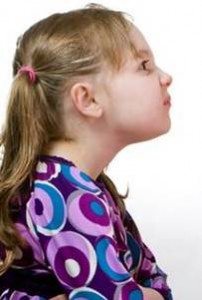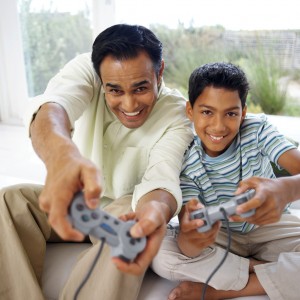I sometimes try to imagine what it would like to be a child with an Autistism Spectrum Disorder [ASD]. To the child with autism the world can often be incredibly irritating, loud, uncomfortable, scary and confusing.
Imagine being in a crowded space, with lots of bright, flashing lights; loud, piercing noises; people crowding in, yelling at you and each other in a language you can’t understand; horrid, overpowering smells; and, amidst it all, someone beside you screams piercingly in your ear. [That actually sounds like places I have paid money to get into!! :-)]
Then imagine you try to get someone to help you to escape, but they don’t understand you or won’t listen. You are powerless and frustrated and scared. You try harder to get your wishes met, you shout, you scream; your terror and frustration rising.
Welcome to the world of the autistic child.
Environmental Triggers
It is not always as bad as this. Often the autistic child is quite relaxed and happy. It all depends on the place, the child’s personality, their emotional state at the time, and precursors or triggers that might have contributed to their sense of frustration or fear. These factors can increase the charge in the child’s already over sensitive nervous system, making even the mildest sensory experience, or smallest fear or frustration, seem unbearable.
Each child will have different things that set them off. The variety is unlimited, but triggers can include sounds, lights, smells, crowds, pain, uncomfortable clothes or shoes, hunger, perceived abandonment, a judgemental look, a hurtful comment, a confusing social interaction or instruction, a nightmare, an unplanned event, or, very commonly, not being able to have or do what they want to.
“The autistic child is often operating just below the red zone.”
These sorts of things can stress us all out, and all of us are capable of losing the plot at times, but the autistic child is often operating just below the red zone, so it doesn’t take much to tip them way over the edge. And triggers can impact abruptly, or build up gradually and cumulatively, until the child can suddenly no longer cope.
The autistic child’s angry and/or frightened reactions can be very confusing and frustrating for the child’s family, friends and teachers. I have heard many parents describe their autistic child as like Jekyll and Hyde. One minute they seem relaxed and happy, the next, World War Three strikes. And this can happen in the most embarrassing places, such as in a shopping centre or at a social gathering, which adds to the parent’s horror and frustration.
Variation in the Autistic Spectrum
Not all autistic children are equal in their levels of sensitivity, or in their reactions to discomfort or frustration. It depends on each child’s own unique neurological peculiarities, as well as their personality and experiences. The autistic spectrum incorporates a huge range of function, anxiety, sensory sensitivity, communication skills, and emotional regulation.
Also, like all children, children on the Autism Spectrum usually get better at managing their emotions as they get older, with the exception of the hormonal pubescent years, which can decrease frustration tolerance and increase the intensity of emotional responses, as is typical in any adolescent child, although sometimes more so for the ASD child. Some ASD adolescents can be very aggressive and difficult to manage, particularly as they grow in physical strength and stature, whilst some have no bigger emotional meltdowns than non ASD young people. Others tend to internalise their responses, or avoid uncomfortable situations, becoming increasingly withdrawn and moody, again, like a lot of teenagers, only more so.
Communication Problems
ASD children can vary enormously in their communication skills, from having almost no language, to appearing to be very competent communicators. However, even those children at the top end of the communication spectrum, often fail to get the subtle messages and social nuances that non-autistic children instinctively understand.
Obsessive Thinking
Another difference is that autistic children can be more rigid and obsessive in their thinking. They often insist on things being done a certain way and they can find it harder to let go of issues. Thoughts and feelings that would come and go in the normal child get lodged in the ASD mind, and, like an uncomfortable stone in a shoe, they can be very difficult to ignore, creating increasing pain and distress. Sometimes these thoughts and feelings can be about external factors, including other people, and sometimes they can be about the child himself.
Aggression and Self Harm
In an attempt to release and manage this intense psychological tension, some ASD children will become aggressive, or even violent, while some stressed ASD children resort to hurting themselves physically. These self administered ‘treatments’ can include banging their head, pulling their hair, punching walls, picking their skin, or even cutting their arms and legs.
How to Help an Autistic Child
For all these reasons and more, caring for a child with an ASD can be very challenging. However, there are certain things parents and teachers can do to reduce the chances of overload, depending on the particular difficulties and age of the child.
- Stay calm and cool, no matter what. [Easier said than done, I know, but stress is contagious and good role modelling is vital.]
- Remember you are in charge, not the child. Be calm and loving, but strong and assertive.
- Keep a record of situations leading up to a meltdown to determine the child’s triggers.
- Ask the child about possible precursors, once they are calm, but don’t press them if they don’t know.
- Encourage the child to engage in enjoyable physical activities to release tension.
- Build the child’s self esteem.
- Use positive labels when talking about the child.
- Plant the idea that the child is getting better at managing their emotions and responses as they are getting older.
- Increase attention and rewards for desirable behaviour, or when the child has managed their reactions, even is tiny ways.
- Decrease attention for unwanted behaviour.
- Help other children to understand and cope with the child’s behaviours, but, if the ASD child has been violent, focus on the comforting the hurt child.
- Have clear, manageable consequences for unacceptable behaviour, as close as possible to the event.
- Avoid taking the child to uncomfortable places, such as big noisy shopping centres.
- Let the child know in advance of planned activities.
- Break instructions down into small steps.
- Create laminated task sheets with pictures for routine activities, such as getting ready for school.
- Provide colour coded time-sheets and maps at school.
- Provide one to one help in the classroom to help the child understand lessons and relax.
- Calm, comfort and distract the distressed child.
- Experiment with ways to help the child feel contained, such as hugging, wrapping tightly, or weighting down with a heavy pillow or weighted clothing.
- Encourage the child to earth or ground themselves, such as by taking their shoes off on grass, touching trees or plants, gardening without gloves, or immersing part of their body in water.
- Get some support for yourself and the child as required.
Look After Yourself
The bottom line is that the parent or teacher of the autistic child has to do all the things that the parent or teacher of the non-autistic child has to do, only more so. They have to be more than good parents and teachers; they must be super parents and teachers. Most need a great deal of support, education, and understanding, as well as outlets for emotional release, such as talking and exercise, in order to cope with challenges they face; much like their ASD child does.




 It is well known that
It is well known that 
